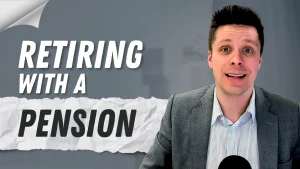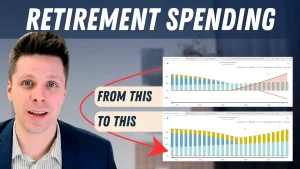Are you tired of turning on the nightly news and worrying about how the day’s events are affecting your retirement portfolio? Are you worried about the day-to-day fluctuations of the stock market? This week we take a look at how to properly manage your retirement portfolio with the Bucketing Strategy so that you can sleep well at night and focus on the things that should matter to you in retirement.
One of the common concerns we come across with new retirees is what to do with their investment portfolio. It can be an extremely intimidating position to be in as the choices they make today could affect their family’s future for years to come.
I don’t blame new retirees one bit. One minute they are working and the next they have a million dollars from their pension or if they’re a business owner, the sale of their business. That’s a lot of money to fall into all of a sudden. Then, as soon as they turn on the nightly news, it seems like the world is ending.
The scenario
Let’s meet Bill. Bill is 65 years old and has just retired from a long career working at Manitoba Hydro. He commuted his pension and would like to receive $50,000 per year from his million-dollar retirement portfolio. Bill has some investing experience, but his biggest concern is if the stock market goes through a significant correction like it did in 2008. He does not want to return to work. Bill watched my previous video and understands the importance of not taking money out of your retirement portfolio at a loss.
Let’s review how we structured Bill’s portfolio so that he could receive a consistent paycheque during his retirement without having to worry about pulling money from the stock market in a loss position.
We use what’s called the Bucketing Strategy. Each bucket serves a purpose and has a role to play during Bill’s retirement.
Bucket #1
The first bucket will be used to pay Bill his required yearly income. As previously mentioned, Bill would like $50,000 per year from his portfolio, so we would deposit this amount in the first bucket. Our goal with this bucket is to provide liquidity and to preserve value. In this case, we would invest the funds in a regular savings account or keep it as cash.
Bucket #2
Since the first year of Bill’s retirement is covered, we can now move on to the second bucket. This bucket will provide Bill income for years 2-9 of his retirement. At $50,000 per year, we would need to deposit $400,000 into Bill’s second bucket. Our goal with this bucket would be to provide Bill with safety and future liquidity. We want to invest in something that will have very little fluctuations, but at the same time, pay us some income so that the value of Bill’s portfolio can grow.
Bonds and GICs work great in this situation as they will provide regular interest with minimal fluctuations. Once Bill’s second year of retirement begins, we would transfer $50,000 from Bill’s second bucket to the first bucket so that it is full again. Our goal with this strategy is to always have money available to spend in the first bucket as the investments within it are immediately liquid and will not fluctuate in value.
Bucket #3
We would deposit the remaining funds in the third bucket, which would be invested long term. This is often referred to as the investment portion of the portfolio. This is the money that we will require in 10+ years to provide Bill with an income. Because we have such a long time frame, we can be more aggressive with this bucket and invest in the stock market. The stock market has historically been a great place to invest for growth, but it also comes with good and bad years.
What happens next
Let’s say during Bill’s first year of retirement; the stock market has a great year. In this case, we would transfer $50,000 from Bill’s third bucket into the second bucket. If you recall, we already transferred $50,000 from the second to the first bucket, so this would refill the second bucket.
If the stock market has a bad year, we would not transfer $50,000 from the third to the second bucket. When it comes to investing, you don’t want to make a habit of withdrawing money in a loss position. We would wait until the stock market recovered and we would then make the transfer at that point.
Assurance, flexibility, and growth
This is a great strategy for Bill as it provides him with a disciplined investment approach that is easy to implement. His portfolio is properly diversified and will provide him with a regular paycheque in retirement. Bill’s biggest fear is a stock market crash like in 2008. The 2008 crash was the worst on record since the Great Depression. As a point of reference, it took the Canadian and US stock markets approximately 6 years to recover to their original levels. With the Bucket Strategy, Bill would never have been forced to withdraw from the stock portion of his portfolio as he has a 10-year buffer built in.
This strategy gives Bill the flexibility to sell his stocks when he wants to, rather than when he has to. Compared to my last video, Bill can rest assured knowing that he has a withdrawal strategy that will not be affected by the day-to-day movements of the stock market. He can sleep easy at night, knowing his financial future is well taken care of.
Have questions about your retirement plan or portfolio? Feel free to get in contact here
Make sure to check out my last video where we go over why your rate of return isn’t always as important as you think.


